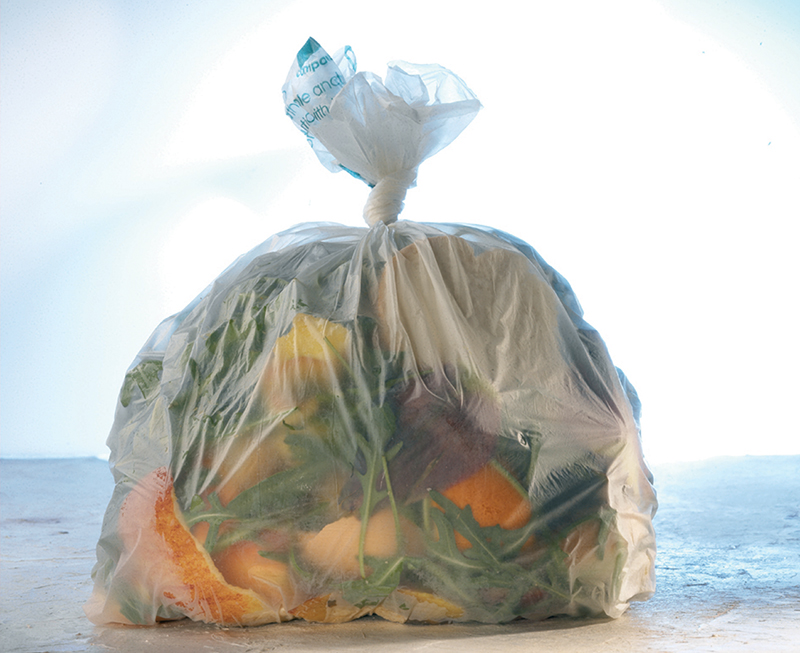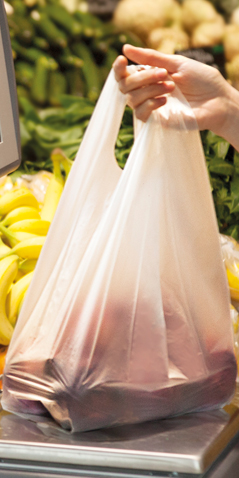Although there are considerable differences between north and south and between developed and not so developed economies, many people today enjoy a good lifestyle, a comfortable home, a balanced diet, higher life expectancy and possibilities for travelling and communicating. One of the phenomena which has allowed for this progress has been the extraordinary growth in plastic materials. Thanks to their low cost and their many qualities, plastic materials have invaded various areas of our daily lives such as packaging, construction, transport, electrical and electronic equipment, furniture and articles for our leisure time.
In many cases, these improvements have come about at the cost of “natural capital” with serious consequences for the health of our planet and the quantity of natural resources required to satisfy ever more demanding and urgent requirements.
The gradual depletion of non-renewable raw materials, the demographic explosion and the increasing demand for responsible products which respect the environment and which can limit plastic pollution of rivers, seas and oceans – inverting this process, where possible – have in this way created an environment which is favourable for the development of alternative solutions: bioplastics.
Assobioplastiche is an association of companies operating in Italy who deal with these materials and products, whether they come from renewable sources or are of fossil origin, having biodegradable and compostable properties.
Bioplastics, i.e. biodegradable and compostable plastics, were created and developed in research centres and universities that have been engineering innovative polymers for more than 20 years.
These are the only polymers which, at the end of their useful life, can be reprocessed and decomposed into their fundamental chemical elements, through biological fermentation, in composting plants.
Right from the design stage, industrial development of these types of polymers has had to take into account the fact that the products to be manufactured and marketed have, as their ultimate destination, the composting plant.
In short, biodegradable and compostable polymers are not designed to replace traditional polymers and to compete with the traditional plastic equivalents.

But first some clarification is needed of the terms biodegradability, compostability and renewability.
Biodegradability is the ability of a material to be degraded into simpler substances through the enzymatic activity of microorganisms. At the end of the biodegradation process, the organic starting substances are converted into simple inorganic molecules: water, carbon dioxide and methane, without releasing polluting substances.
Compostability – which concerns a product's end-of-life – is the ability of an organic material to be recycled organically together with wet waste, being transformed into compost through composting, the process of biological decomposition of organic substances which occurs under controlled conditions. At the end of the composting process, a biologically stable, inert and odourless product is obtained in which the organic component is at an advanced stage of maturity. Rich in humus, active microbial flora and microelements, compost is an agricultural product (used as fertiliser for gardens and nurseries, field crops) and the ideal solution for combatting desertification and carbon depletion.
Organic waste in Europe totals between 118 and 138 million tonnes, only 25% of which is recycled (source: European Composting Network), dispersing a large quantity of carbon which could be put back into the soil to positive effect through compost, especially in areas where the risk of desertification is imminent.
The concept of bioplastic thus applies to those products which at their end-of-life guarantee certified organic recyclability in the various environments (e.g. composting, anaerobic digestion, soil). Use of renewable sources, better still if from by-products and waste, is an integral, but not sufficient, part of a bioplastic.
It is also possible to use renewable raw materials for the production of traditional polymers, e.g. so-called green polyethylene which behaves in the same way as a product from a fossil source at end-of-life and is not, therefore, biodegradable and compostable.

The most controversial aspect of traditional plastics today is disposal and recycling. When properly managed, it can be considered as an environmentally-sustainable system, but when the plastics applications involve contact with food or other vegetable residues, as in the specific case of food packaging or agricultural mulching, or when the material is heavily contaminated by organic residues when it comes to end-of-life, proper recycling requires that the products be washed (with additional costs); alternatively, they are incinerated or dumped. In these cases biodegradable and compostable plastics may be an environmentally-sustainable alternative and provide solutions which reduce management costs.

Currently, the most common applications for bioplastics are:
- Compostable bags for organic waste collection and “carrier bags” (which can later be used as bags for organic waste), which increase the volume of organic waste collected, reduce the quantity of waste taken to landfill sites and improve the quality of composting.
- Biodegradable film for agricultural mulching which can be processed in the ground after use, thereby reducing the amount of work and the economic and environmental costs associated with collection and disposal of traditional film types.
- Film-coated, moulded and extruded products for foodware, food packaging and the agricultural sector (suitable for composting after use), reducing the amount of work and the economic and environmental costs compared to traditional materials.
Finally, the European Commission has recently proposed limiting the production of “single-use” plastic applications, with the aim of reducing pollution of the seas. The Commission’s proposal includes various measures for the applications identified, such as a ban on the sale of sticks for cotton buds; extended producer responsibility for food containers (e.g. those used in fast food outlets), etc.
Assobioplastiche, the Italian Association for bioplastics and biodegradable and compostable materials, promotes the use and image of bioplastics and endeavours to protect the sector from unfair competition and practices.
Assobioplastiche wishes to contribute to the implementation of a legislative framework designed to encourage the production and spread of low environmental impact materials, their proper use, the correct application of standards and certifications identifying biodegradable and compostable products, and the promotion of biodegradability and compostability labels in accordance with the EN 13432 standard. In this way, it will help ensure that the commercial offering is better understood, that consumers are properly informed and that options for recycling organic solid urban waste are developed that promote composting and anaerobic digestion in harmony with all the methods for managing end-of-life indicated by various European Waste Directives.